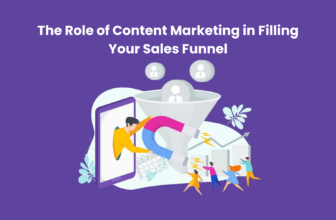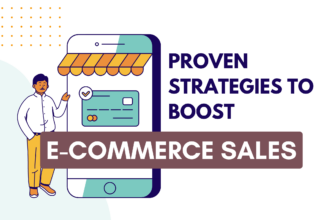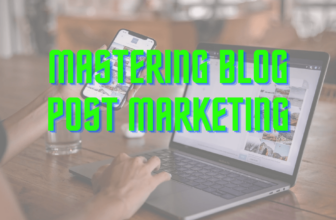It’s been proven that people are more likely to remember information when it’s presented visually rather than in plain text. Images speak a thousand words, and you can keep your audience engaged by using visuals such as infographics, photos, videos, and charts. We will remind the seven powerful visual content types that will boost the result of any marketing campaign. Let’s go!
1. Infographics
Infographics are a great way to amuse and educate your audience about information related to your product or service. The use of visuals can also increase understanding and recall of information by up to 70%. Indeed, it is a desirable form of content for many publications and websites.
What is included?
It often contains attractive visuals such as diagrams, illustrations, or photos that add entertainment value. To create a worthy sample, you must incorporate several forms of data, including statistics, facts, maps, and graphs. The data is organized into a logical structure and displayed aesthetically pleasing, encouraging readers to explore the content.
How does it help?
They can help you get a lot of exposure and make it your calling card. In addition, they create complex concepts that are easier to understand, allowing readers to take in more information than traditional text-based content. When used effectively, infographics can help readers better understand complex topics and draw connections between related ideas.
2. Video Content
Companies can use video content in their marketing campaigns to boost brand awareness, showcase products or services, drive conversions, increase website traffic, and more. With the right strategy and creative approach, videos make businesses stand out from the competition and engage with their customers on a deeper level.
How do videos enhance you?
Video content has become an integral part of the marketing mix for many companies. You can read about marketing solutions for small businesses here. It can be used to create compelling stories that engage viewers and leave a lasting impression. Video content is also highly shareable, allowing brands to reach new audiences and potential customers quickly. Additionally, videos are one of the most cost-effective forms of marketing, allowing companies to produce high-quality campaigns on a limited budget.
Videos are a powerful marketing tool that can make an announcement, demonstrate the features of a product or service, or provide helpful how-to tips and advice. This type of content is especially effective on social media as it tends to have higher engagement rates than other formats.
3. Social media posts
Your posts on social media must be visually appealing and consistent with your brand’s overall look and feel. When creating a marketing campaign, use social media templates since they save you time and make your social media content look stunning and on-brand. In addition, whenever you are promoting an upcoming event or product launch, go to MasterBundles for a template specifically for that purpose. It suggests cross-platform options and various topics and reminds you to add relevant hashtags or links to encourage people to take action.
Social Media templates
A range of professional social-media templates allows you to experiment with different styles and formats. For example, templates like carousels or grids are perfect for showcasing products, while stories will enable you to share behind-the-scenes looks into what your business is doing. You could even get creative with interactive polls or quizzes to engage users in a fun way. With templates, the possibilities are endless! So get creative and start crafting beautiful content for your campaigns!
4. GIFs
Fun gifs are one of the most popular types of visual content online today, and they’re perfect for delivering bite-sized messages that are quickly shared and understood. In addition, GIFs can convey your brand’s atmosphere and add energy to a dull post. As a result, they are often used in email newsletters, social media accounts, and websites.
Tips for using GIFs
Keep a few things in mind using this content type. First, ensure that your GIFs are relevant to the topic or message you are trying to communicate. Also, make sure that your GIFs are appropriate for any audience you may be targeting with your campaign. Finally, double-check that the GIFs you use are high quality, as low-quality GIFs can leave viewers with an unfavorable impression. Follow the rules and make the most out of your GIF usage!
5. Illustrations
Custom illustrations are great for adding personality and character to a website or other digital projects. They provide visual interest while still efficiently conveying essential information.
About types
When accepting or creating illustrations for social media as part of a marketing campaign, it’s essential to consider the style and aesthetic of the picture. Will it be hand-drawn or digital? Will the colors be bright and cheerful or muted and subtle? How will the overall look tie in with your brand identity?
Consider target audience
In addition to style, another vital factor is making sure that the content resonates with your target audience. Who are you trying to reach? What kind of stories do they want to see represented in an illustration? Read about various graphic design styles. Using attractive visuals can help capture attention, but if there’s no connection between them and your message, you won’t grab their interest long-term.
To connect with people, you need to learn their values, interests, and motivations; you’ll be better placed to create genuinely resonating illustrations.
Follow technical requirements
Finally, don’t forget the size requirements – different social media platforms have varying image specifications, which must be adhered to if the illustration is going to look its best online. Knowing these sizes before starting work will help ensure that there are no surprises later on down the line.
6. Quotes & Sayings
Inspirational quotes and witty sayings can be used as standalone images or incorporated into infographics or other visuals for added impact.
How do they help?
Visualized quotes and sayings are the perfect addition to any marketing campaign. But first, read about the five steps to build it. From iconic posters displaying inspiring messages to viral videos featuring motivational mottos – visualized quotes and sayings have been used to great success in marketing campaigns. Quotes can help drive a message home, inspire people to take action, or evoke emotion in an audience.
Visuals make these words even more powerful – they create impactful visuals that grab attention, engage viewers, and reinforce their message. They also add a layer of authenticity since viewers know the quote comes from a respected person or a trusted source. Of course, you must ensure that whatever quote or saying you use is relevant to your audience and campaign.
For any purposes
So whether you’re advertising a new product or simply trying to spread awareness about an important cause – don’t underestimate the power of visualized quotes and sayings! They could be just the thing you need to get your message across.
7. Memes
Fun memes are often the best way to make a statement or add humor and personality to your social media content. They can also lighten the mood of serious topics or campaigns, making them more accessible and engaging for your audience.
How do they help?
Memes allow brands to reach a broad audience in an entertaining and shareable way. They are typically short messages, or images spread rapidly through social media networks. They often contain cultural references easily recognizable by the target audience.
Be careful of using memes.
When used correctly, memes can help build brand awareness and loyalty while driving engagement with content shared on social media channels. By creating a meme-based marketing campaign, businesses can make shareable content that resonates with their target audience. Thus, it requires proper investigation of the target audience.
Brands should focus on creating memes that will be relatable to their followers and use meme formats sparingly, as this can lead to consumer fatigue and a lack of engagement.
Businesses should be mindful of the potential for memes to go viral in a negative way. For example, if a meme contains offensive content or is perceived as insensitive, it could damage the business’s reputation and lead to consumer backlash.
Conclusion
When crafted appropriately, all types of visual content can be an invaluable tool in any business’s marketing arsenal — it helps engage customers, generate leads, boost brand awareness, and more! Regardless of your business type, getting creative with visual content will surely increase engagement on all channels. So start utilizing the power of visual content today!






